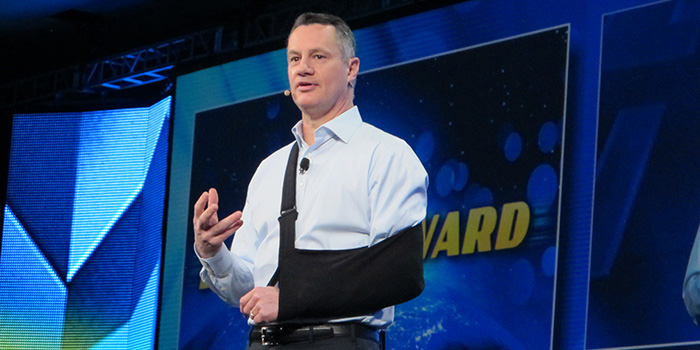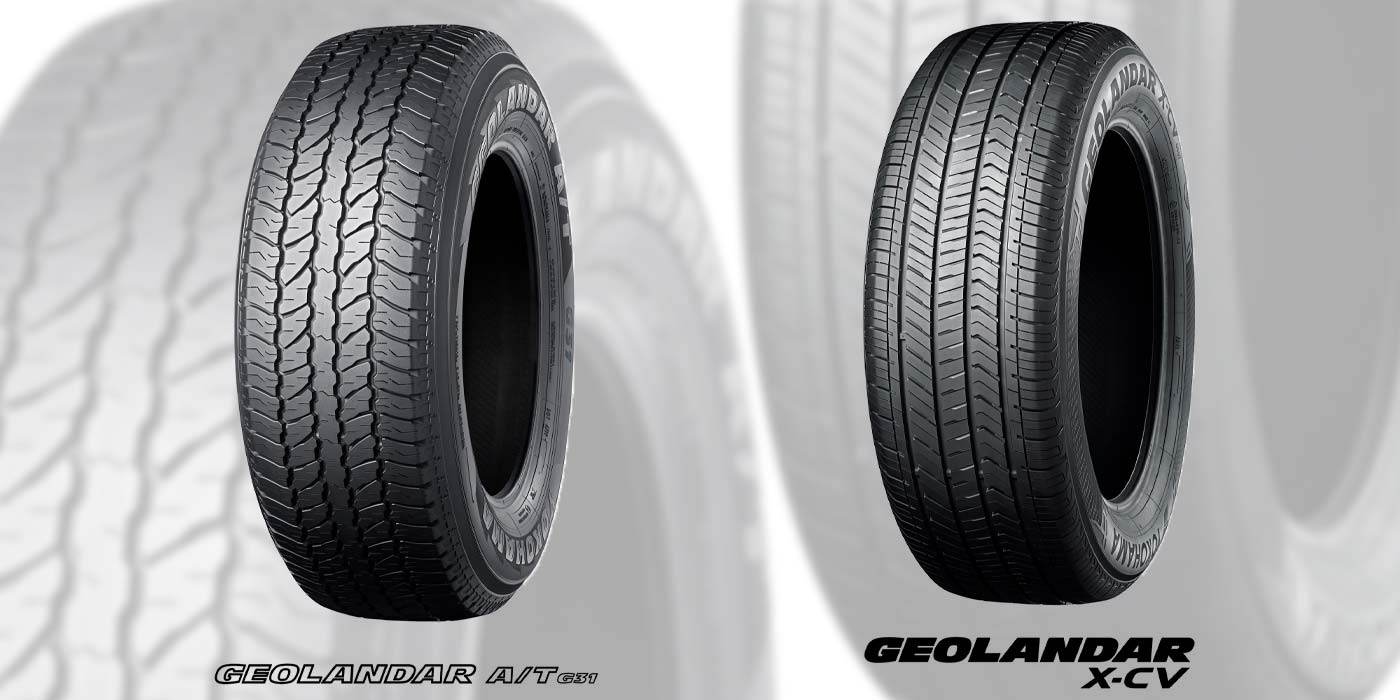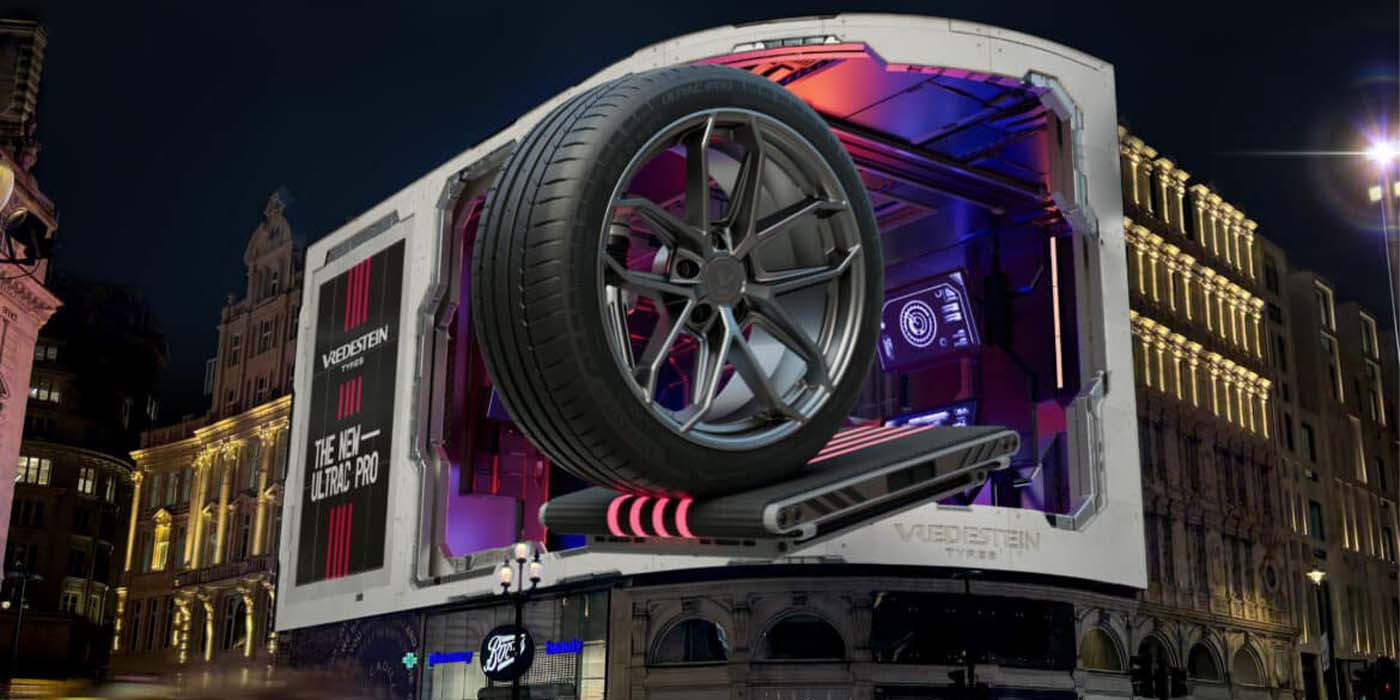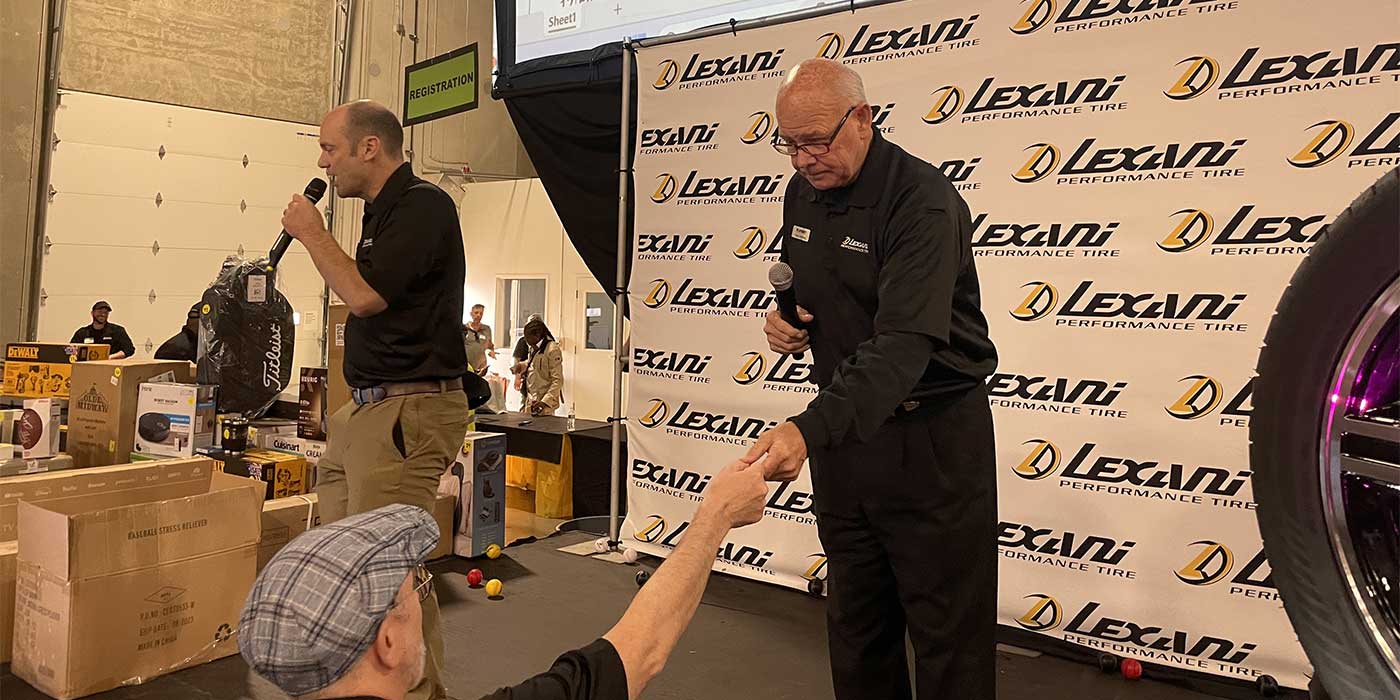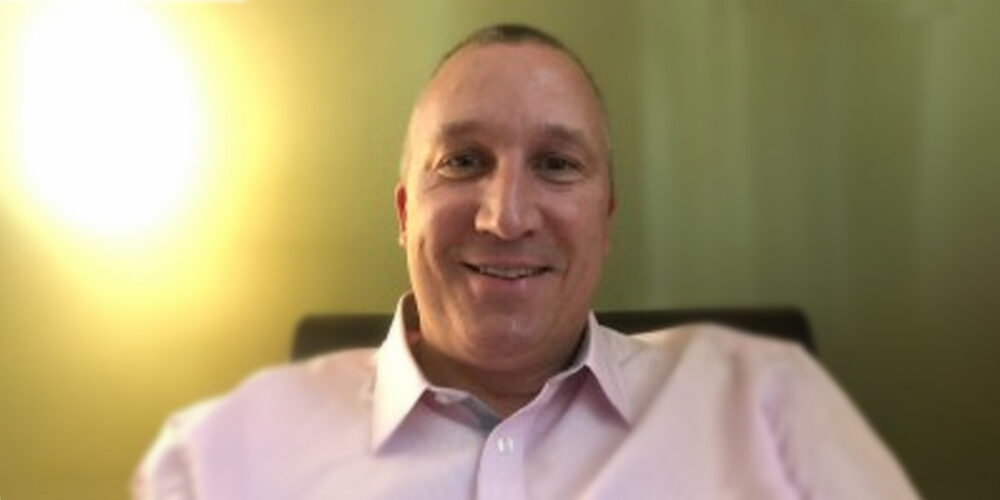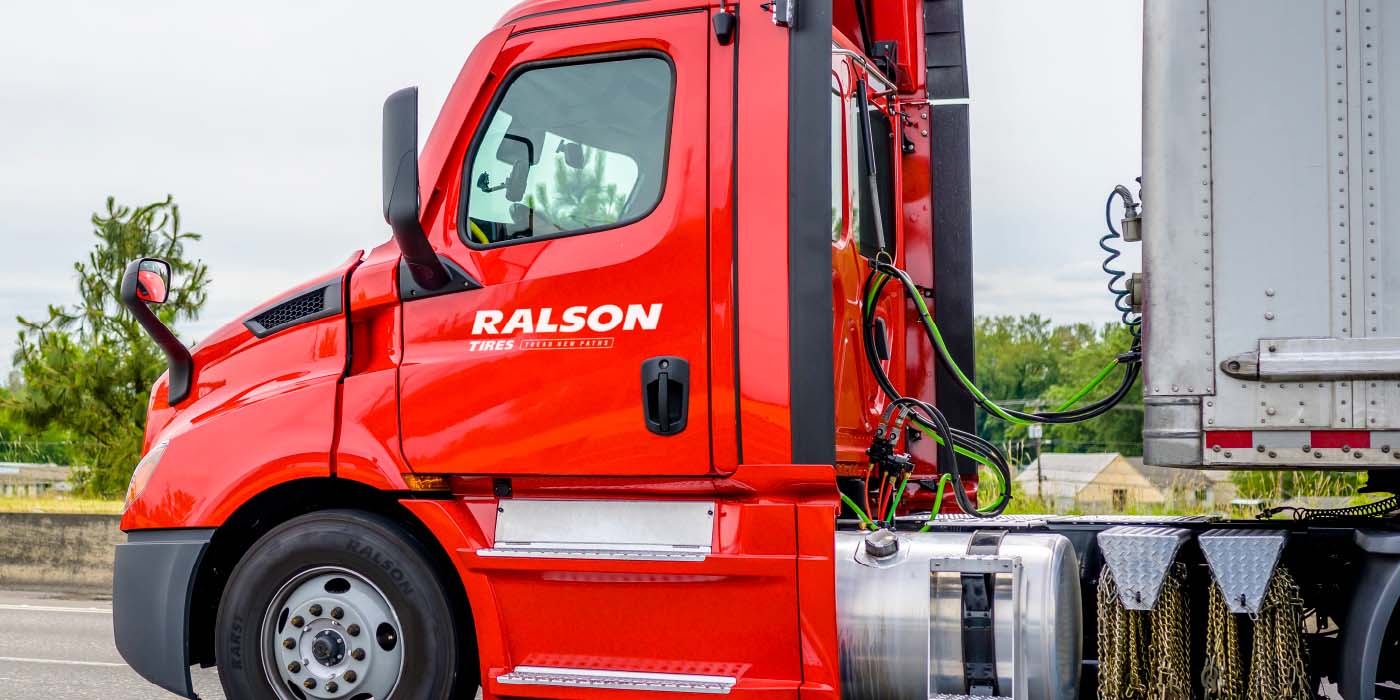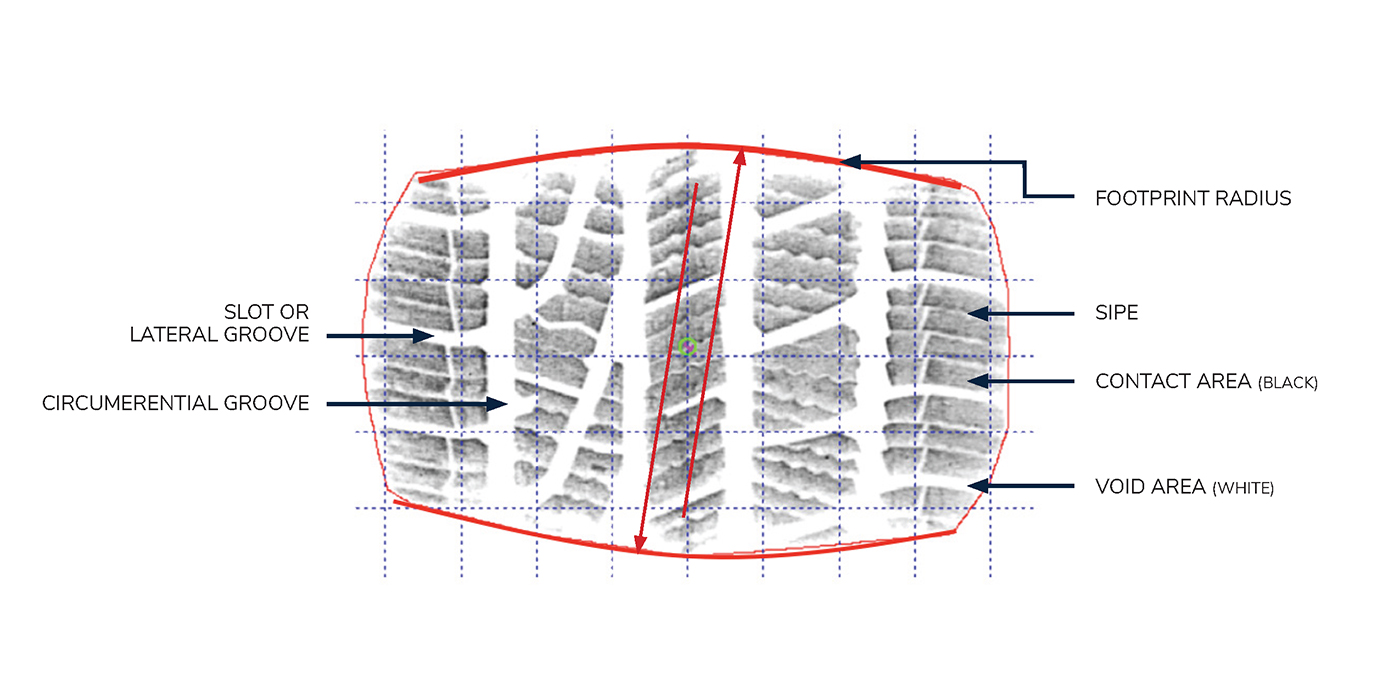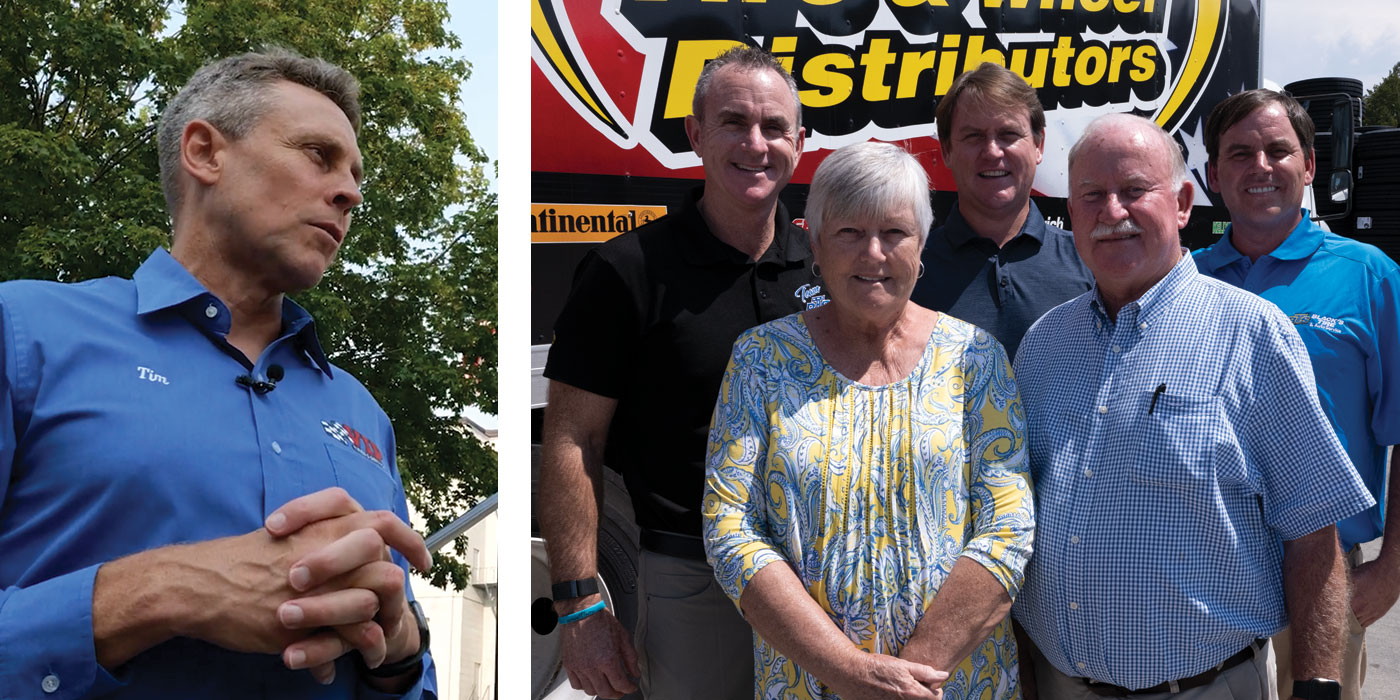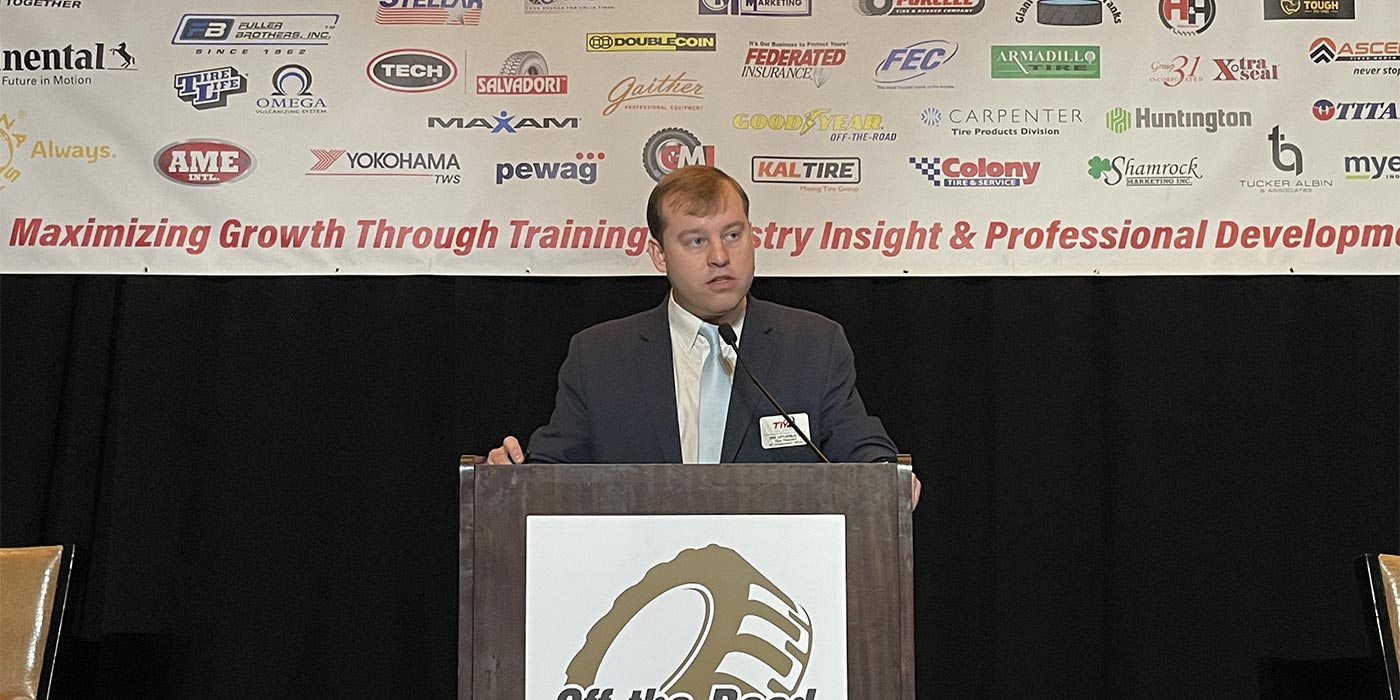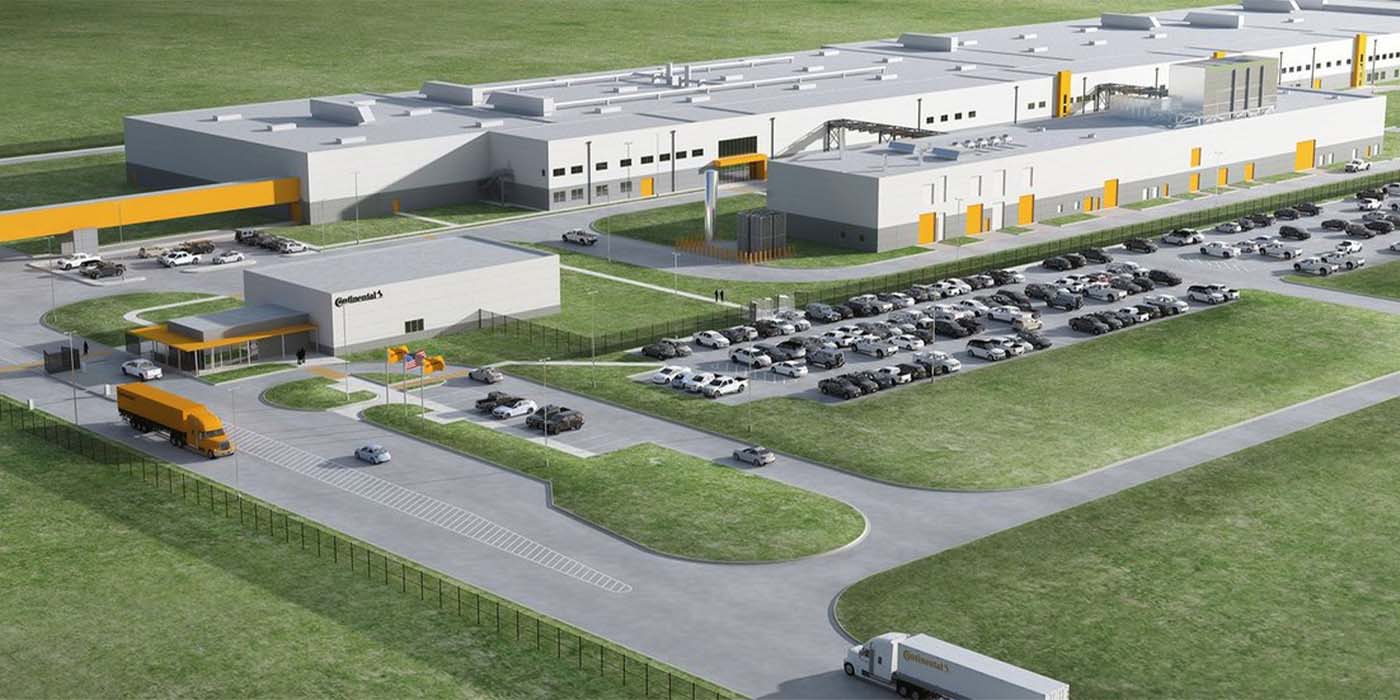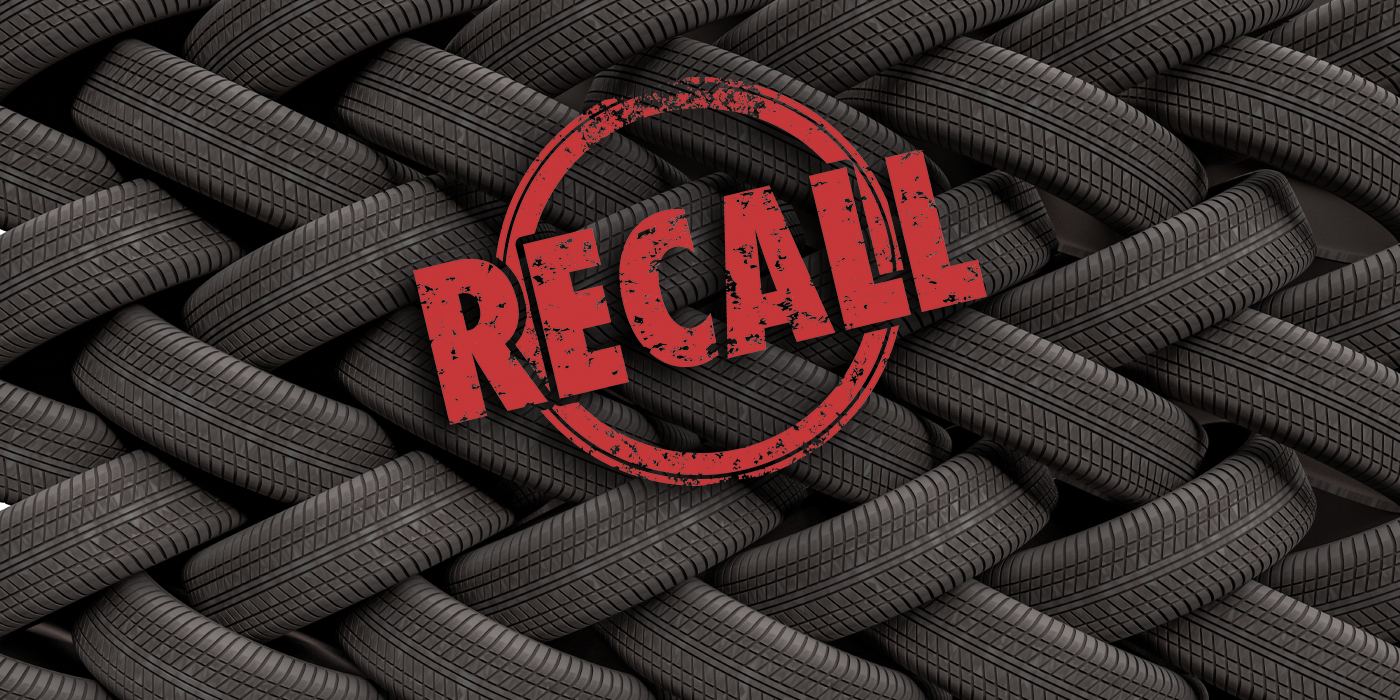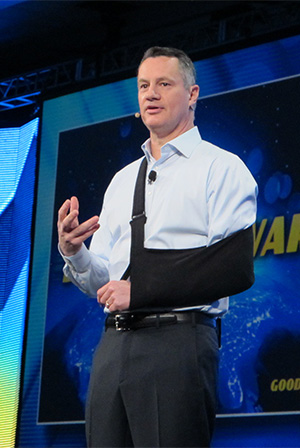
Editor’s Note: Chairman and CEO Rich Kramer, as he does each year, closed out the annual Goodyear Dealer Conference. In the past, Kramer has focused on broader issues, but this year brought a finer focus on Goodyear in North America, its relationship with dealers and its relationship with consumers going forward. On the heels of Goodyear’s announced plans to open an e-commerce platform to sell directly to consumers, Kramer’s remarks during last week’s gathering at the Gaylord Texan outside of Dallas are particularly interesting. We have edited Kramer’s speech down for space, but everything published here is as stated in his remarks.
“Sometimes all of us, we look at our own industry, our tire industry, and we see it as a bit of a slow-moving industry, maybe one that’s not that fast to change. And even me, when they told me the theme of the conference was going to be ‘Fast Forward,’ I thought, ‘Okay, what’s going to be the big difference? How much is going to change from past dealer conferences?’
We’ve had such successful meetings in the past. But I have to say, when I saw what was happening on the tradeshow floor, listening to some of the seminars, seeing what’s happening, I can see all of you already are becoming early adopters of these new uses of technologies here. I’m impressed, I have to say. I saw the digital tools, all the things you signed up for, the lead generators, all the mobile activity out there. And for me it was like ‘Fast Forward’ coming to life already. And you know, for us, that’s not usually what someone would think about when they think about the tire industry. So, I’m pretty impressed. I’m pretty pleased.
So, as I thank you for your business for 2014, I also want to thank you for embracing what’s new and embracing what we’re trying to drive and continuing also to invest in growing your business for the future. That’s so important. And make no mistake, whatever the future holds for our industry, we have to remember: There is no future without all of you. So, on behalf of all our Goodyear associates, thank you all for being part of the Goodyear family.
Now, the theme of our meeting is ‘Fast Forward.’ I’m going to cheat a little bit and just look back at 2014 just for a moment. Steve (McClellan) and his team did a fantastic job of that yesterday, so I’m not going to spend a whole lot of time doing it. But what you heard Steve say is that our strategy is unchanged. We’re going to continue to win in profitable market segments where the value of the Goodyear brand can be differentiated from its competition. And as you can see, the strategy is working. Our brand is stronger than ever, and the demand for our consumer products, our commercial products, our off-highway products in both OE and replacement channel continues to increase, continues to go up. And I want you to think about what we said back in the depths of the recession. We said that the recovery of our industry wasn’t a question of if but was a question of when. What you heard Steve say yesterday is that when is now.
I want to go one step further. I want to tell you that not only are the current conditions for our business today right for growth and ready for us, but everything that we’ve done since the Great Recession has prepared us to take advantage of the opportunity that’s in front of us today. We prepared for that because we believed that it would happen.
And while we look at this, what we’ve been through, this has been a chapter in the history of Goodyear. But I want you to think about it as just that, one chapter. The Goodyear story is still being written. And the best news about that is we’re the ones writing it, and we want to write a story about the best company in the industry with the best products and strongest brand and the strongest dealer network in the industry, full stop, period. That’s the challenge before all of us.
And I’d like to take the rest of my time up here today to talk about what we have to do in our businesses to meet that challenge.
Now, a lot of you, I hope, remember what we talked about last year. We focused on the changing consumer and what we called the eighth mega-trend. We talked about the next generation of consumers and how their habits for buying and shopping were vastly different than what we were used to. We talked about how the role of technology would play into all this behavioral change that we were seeing, and we gave you an overview of the demands and expectations of these new millennials, these new consumers.
So this year, this year I’d like to go one step further and share my thoughts on how our response to these evolving consumers is going to serve as a catalyst for a complete transformation of our business.
Now, make no mistake. Our future is going to be shaped by these millennials, tens of millions of these new consumers entering in the market with a trillion dollars of buying power. To me that was a clear reminder of something that we should all know, and that’s that it’s all about the consumer. Everything that we do can starts with the consumer.
Many of you are looking at me and saying, ‘You brought me to Dallas to tell me that it’s all about the consumer? I’ve been selling tires and running my business for 50, 60, 70 years.’ Of course we know that. I understand that. We’ve got to keep doing that. But you know, there’s something substantially different about the consumers now, and it goes beyond their age and some of the behaviors we laughed about the other day and about their mobile phones.
I want you to think about something. I want you to think about when you started your business and who you were selling to. You were selling to people that were like my dad, people that you developed a relationship with, a relationship of trust, somebody you may have known around town. You may have known him socially, maybe through your church, maybe through the PTA, maybe through your kid’s school, whatever that might be. You saw him around town, and you got to know him. When he needed tires, he had a lot fewer choices than he has today and maybe even fewer brands. And he’d come to your store, and if you were out of stock, he was okay to wait. He thought it was fine, and he’d just come back to get the tire when it was ready.
So, like all consumers of that age, he was captive. You sold tires on your terms, and you were in complete control of that transaction.
Let’s look to where we are now and, maybe more importantly, where we’re going. Instead of selling to people like my dad, you’re going to be selling to people more like my sons and daughters. We’ve talked a lot about these people, always connected, finding product information online, looking up reviews, reading comments and ratings, sharing all that information with their friends. That’s the source of their information.
Unfortunately, it’s not only you and us anymore. Their expectations have increased in everything that they’re doing. So, it’s going to follow, why can’t they get that experience when buying tires? It’s coming. Consumers are no longer captive. Consumers now are shopping on their terms. Consumers are in control. And that’s what’s changed. That’s what’s different. And it’s a big deal. It’s a very big deal.
So, what does that mean for all of us as we roll this through our head and let it season in?
I would tell you that to win in this environment, our mandate is very clear – We have to make the tire buying process easier. Making and selling tires isn’t enough to win the hearts and the minds of these evolving consumers. It’s necessary, but it’s insufficient. It’s not enough. The brass ring for us, what we want to accomplish, is to create a seamless experience with our brand and your stores, recognizing that the consumer’s in control and we need to add value against their increased expectations.
And the company that figures that out first, the tire company that figures that out first or how to do it best is going to be the winner.
So, let’s take a step back, and let’s look at who’s winning with consumers today, because this is actually happening all around us and we’re actually participating in it. Just think about a couple examples that I think are probably very familiar to you. The first one is Amazon. Everybody uses Amazon. You want to buy a book on Amazon, one click and you can have the book there the next day. If you have a Kindle, one click and you can get it in 30 seconds. How about Zappos? You want a pair of sneakers, a pair of shoes, you’re not sure which ones you want, you don’t know if they fit. They send three to your house. You try them on, you see the ones that fit, and you send the two back that you don’t like. It comes with a return label. You put it in a box. The mailman comes and picks it up from your house. Pretty easy.
How about fast food? Fast food is even faster now at Chipotle. Chipotle has an app that lets you order online and pick it up. Who stands in line for fast food anymore? Am I right? How many of you do that at Chipotle? There’s got to be some of you out there, I’m sure.
There are a lot of new companies and newer companies that you say, yeah, they’re doing that stuff; that’s where they’re going. But I want to give you another example of a legacy company that’s winning. Does anybody know who one of the winners was in the most recent holiday shopping season? Anybody have an idea? It was a 150-year-old retailer named Macy’s. A 150-year-old company. What they did is said that in addition to shopping at their store, you could order online and go to the store and pick it up or have same-day delivery. How cool is that? They had a great Christmas season because of that.
Now, what do all these companies, what do they have in common? It’s very simple. They made the buying process easier, and they created value by solving problems for those consumers. They recognized that the consumer was in control, and these retailers embraced technology to meet those consumers’ expectations and solve their problems of time and convenience. And that’s creating value. Consumers are willing to pay for that.
As when we think about us, that’s our challenge. That’s what we have to do together. We want to add value for our brand and your business by making it easier for consumers to buy Goodyear tires at your stores, all the while recognizing that the consumer is in control.
I want you to imagine this, visualize this. Let’s say your son wakes up one morning, goes out to the garage and he realizes the pothole that he hit last night gave him a flat tire, and he needs that tire fixed now. So, what does he do? He goes back inside, and he grabs his phone. He goes onto Goodyear.com, which is optimized for the device. He finds the right tire. It’s easy. It’s intuitive. He goes online, and he’s reading positive comments and reviews right online, right on the website, enabled by that website. It gives you the opportunity for consumers to comment. He reads those reviews. They’re not just about the product; they’re about the service provider, the installer, as well. The GPS in his phone automatically determines the closest aligned Goodyear dealer that’s going to put that tire on. He chooses to pay for the tire with one touch, not oblivious to price but price not being primary, it’s taking a backseat to convenience. He then taps the screen again to make an appointment later that afternoon. Of course, he comes into your shop and you greet him by name, thank him for his business, and he walks over to the waiting room to get a hot cup of coffee, hook into your Wi-Fi, do emails, make phone calls, whatever. Before you know it, the car’s done. He’s driving out the door, and you’re emailing the receipt.
Now, can you imagine that? That’s what making the tire buying process easy is all about. We have to realize that consumers don’t understand why they can’t have that today. And we may ask ourselves why can’t we do that today?
In a word, friction. Friction is the obstacle to a positive experience. It’s a hassle, a big hassle or a small hassle that nobody wants to deal with. It’s a barrier to a consumer experience being as easy as possible. And friction is everywhere. You encounter it all the time. Anybody have a son or daughter who just went to college, and you had to apply for a student loan? Loaded with friction. How about doing something with your cable TV? It makes you pull your hair out, right? Loaded with friction. Worst yet, trying to change something on your cellphone or figuring out the billing and all that type of thing. It’s all about friction.
An example in the opposite direction is somebody like Enterprise Rent-A-Car. Anybody use Enterprise? They eliminated friction by doing what? Saying they’ll come pick you up to rent your car. So, you’re getting the picture of what friction is.
Consumers don’t like friction. They want it removed. And the more it’s removed, guess what happens? Their expectation is that it’s removed in everything that they do.
Now, how about for us and our retail tire businesses? We love the tire business, don’t we? We love the smell of tires, the feel of tires. It’s our distinct smell. But the fact of the matter is the tire retail business has always been filled with friction. Think about it. How many times do you go to a store or maybe multiple stores to find what you want. A consumer comes in, they don’t always know what they want. They’re not really smart about their purchase. The store, for whatever reason, may be uncomfortable. The store could be out of stock of the tire they wanted. So they have to go to another store. And the installation process may take longer.
You can get the picture. You think about our business. Friction has been around as long as all of you have been selling tires. And if you don’t recognize it, I guarantee you that your customers do.
Now, take a moment to think about friction in your business. What’s creating friction in your stores with your customers? Now, when you were in control, those things didn’t matter. Friction didn’t matter. But now, with the consumer in control, it matters. They’re all noticeable obstacles and hassles that they don’t want to deal with. So for us, how do we reduce friction? How do we make the tire buying process easier?
Let’s start by looking up. Let’s start by looking for solutions, because it’s a journey. I’ve got three things that I want you to think about as you leave this conference.
And the first one is easy: It’s getting started. If we want to be the company, the group, that does it best and does it first, we can’t just talk about it. We have to get started. And how do we do that?
Well, you saw Andy Traicoff’s (vice president of North American Tire consumer operations and customer development) presentation yesterday. He said we’re going to begin selling tires online. This is a huge change in our industry. It may be scary, but frankly it’s not a surprise. All we’re doing is embracing the behavior and the shift to buy online. It’s a trend that you all know is coming with a full head of steam, and it’s going to come with or without us. All we’re really doing is meeting those expectations of those new consumers that’s going to increase as we go forward.
And you see this supported by all the data around you in our conference and clearly in other places, as well. And certainly to get to this point, we’ve done our homework. We don’t view this as a temporary trend. We’ve researched it for multiple years, and we understand the value of the Goodyear brand in that environment. As you heard the team yesterday say, we’re the number one manufacturer’s website searched by far. And as we started this process, we brought you into the fold for testing, for talking. And we’ve been very patient about this as we’ve gone.
But you know what? We believe in this stuff. We believe in the power of the Goodyear brand as having a competitive advantage, and we believe as evolving consumers’ experiences and their expectations increase, their expectations are only going to get higher. Those consumers are never going to go backwards. So, if we don’t do this, somebody else will. And make no mistake, I want to tell you that Goodyear is committed to this path. We won’t get left behind. But more importantly, we won’t leave you behind. We must do this together.
Now, the second thing I want you to think about is all this friction that’s going on. But in the midst of all that friction you have a tremendous competitive advantage, and it gets me really excited. When consumers buy online, consumers have to come to your stores. To your stores. This is a huge advantage, a constant in a time of significant change. Your stores, your bricks-and-mortar stores are your competitive advantage. You get to see the customer and build that relationship. How cool is that?
Let’s look at a few numbers for a moment. I went back and looked just quickly at 2007 and 2012, and you see on the screen the number of tire stores that are out there. What you basically see is no drop-off. Now, let’s look at some other industries, at the electronics industry, the shoe industry, the footwear industry. Many of those stores do you continue to see when you go out and shop? How about bookstores, Borders in particular? In January of 2010, there were 511 Borders bookstores in the United States. By September of 2011, they were all closed, every one of them.
But here’s the good news. You’re not Borders. You’re all still here, and consumers must come to your stores. You have the opportunity to create value for this evolving consumer in your stores, to make the buying process easier and to solve their problems of time and convenience. You have the ability to create a valued experience for those consumers. This is your opportunity. And if you leave with one thing from this conference, please recognize it because nobody else can do this but you.
And the third element I want you to think about, it’s maybe dreaming a little bit, but it’s the complete elimination of all friction in our tire business. That would make the tire buying process as easy as possible. If we make a complicated transaction seamless and easy, making it so easy to buy a Goodyear tire from your stores, you leave consumers with no other choice. I know I’m dreaming a little bit here. There’s a lot of things that have to come together to make that happen, and I appreciate that, believe me. I know it won’t be easy, but I believe it’s worth the challenge. And the reason I believe that is it gives us the chance to do something that no other tire partnership group has ever done before.
Now, being the company and the brand that everybody wants to do business with is what I challenge my team with on a day-to-day basis. Try to be obsessive about this. And I don’t tell them we have to solve every problem in a day, but I do tell them that we have to get started. We have to do more than think about what’s possible. We have to embrace the ideas that seem impossible. And that’s really hard to do. It’s really hard to shift conventional thinking and look out over the horizon when you’re up to your eyeballs in doing your day-to-day work. It’s very difficult. So, to inspire them I’ve shared a video with them that I’m going to share with you with the hope that it inspires you and does the same thing.
Now, every great accomplishment starts with the vision, a sense of purpose and a sense of urgency. And more than 50 years ago, President Kennedy captured all of that in a single moment that set the stage for an achievement that changed the world.
JFK: “But why, some say, the moon? Why choose this as our goal? And they may well ask, why climb the highest mountain? Why, 35 years ago, fly the Atlantic? Why does Rice play Texas? We choose to go to the moon. We choose to go to the moon. We choose to go to the moon in this decade and do the other things not because they are easy but because they are hard, because that goal will serve to organize and measure the best of our energies and skills, because that challenge is one that we’re willing to accept, one we are unwilling to postpone, and one we intend to win, and the others too.”
Kramer: That was a historic moment. That sends chills down my spine, watching that. If that doesn’t inspire you, I’m not sure what will.
It may very well be that our own moonshot is completely eliminating friction from our business, driving an unprecedented change in how we work and why we work. We know that there’s not a step-by-step plan to do this, just as President Kennedy didn’t have a proven process to get to the moon. But we have to clearly see the world around us. We’ll learn and build and get better at it as we go. We know a transformation, a change, will take time, but we will have both patience and a sense of urgency along the way. And we know our competition will respond, but I believe we will lead this industry and set the standards that others will have to follow.
As Kennedy said, this challenge “will serve to organize and measure the best of our energies and skills,” yours and ours. This challenge is one we’re willing to accept, you and Goodyear together. And it’s one we’re unwilling to postpone and one we intend to win together. That’s our new frontier. Let’s make this journey together.
So, thank you for your time and attention this morning. Thanks for being here. And most importantly, thank you for choosing Goodyear. Thank you everyone.”

